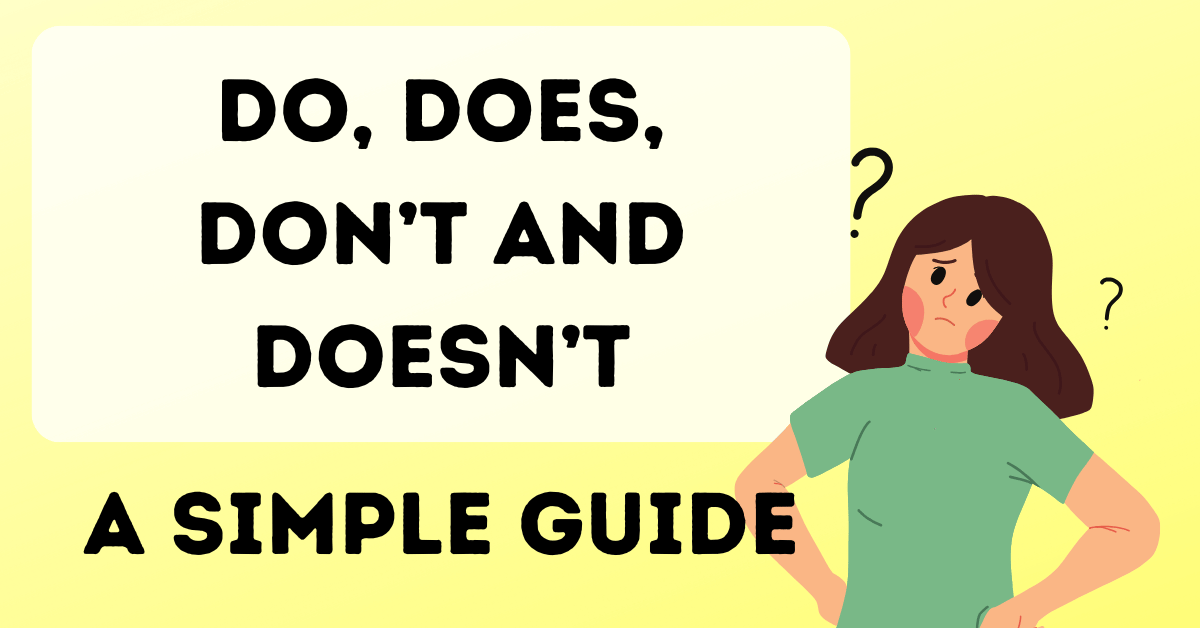Understanding when to use do, does, don’t, and doesn’t can help you form correct questions and negative sentences in English. Let’s break it down step by step.
1. When to Use “Do” and “Does”
We use “do” and “does” as helping (auxiliary) verbs to form questions and positive statements.
- Use “do” with I, you, we, they (plural subjects).
- Do you like ice cream?
- We do our homework every day.
- Use “does” with he, she, it (singular third-person subjects).
- Does he live here?
- It does work properly.
💡 Tip: After “does,” use the base form of the verb (without “s”).
- ❌ Does he likes pizza? → ✅ Does he like pizza?
2. When to Use “Don’t” and “Doesn’t”
We use “don’t” (do not) and “doesn’t” (does not) to make negative sentences.
- Use “don’t” with I, you, we, they:
- I don’t like spicy food.
- They don’t speak French.
- Use “doesn’t” with he, she, it:
- She doesn’t watch TV.
- It doesn’t work on weekends.
💡 Tip: After “don’t” and “doesn’t,” use the base form of the verb.
- ❌ She doesn’t likes coffee. → ✅ She doesn’t like coffee.
3. Quick Summary Chart
| Subject | Positive Sentence | Negative Sentence | Question |
|---|---|---|---|
| I, you, we, they | I do | don’t | Do you like tea? |
| he, she, it | does | doesn’t | Does she play soccer? |


